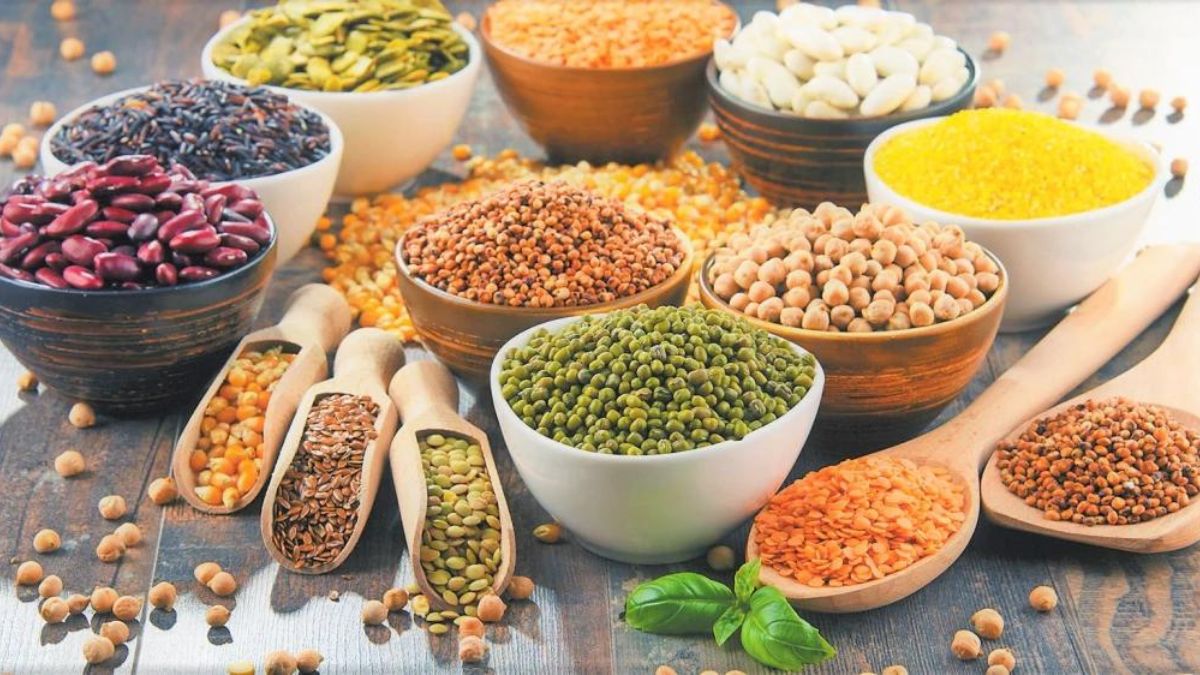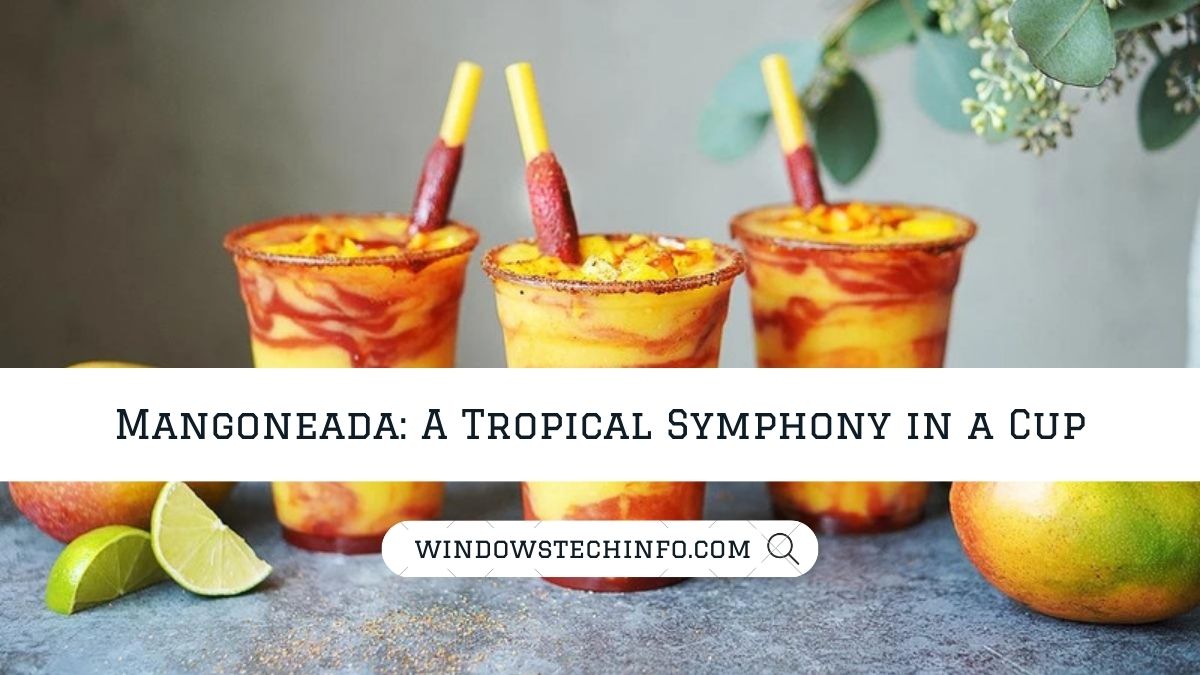FOOD
Ombre Gratin: Layers of Culinary Delight

Ombre Gratin is a gourmet masterwork that blends both simplicity and sophistication to create an appetizer that is an indulgence for the eyes and the palate. This scrumptious delicateness was initially developed in the heart of France, but it is currently making its way all through the entire globe. All aspects of Ombre Gratin production are explained here, from its ancient origins to its subsequent incarnations.
1.Introduction to Ombre Gratin
The widely recognised French meal Ombre Gratin, frequently referred to as “gratin,” is distinguished by its layered composition. In French, “ombre” denotes “shaded” or “gradual,” which is a wonderful characterization of these meals. Layers of sliced vegetables or additional components (often potatoes) are covered with cheese and cooked until the shredded mozzarella has melted and browned.
2.The Origins of Ombre Gratin
Ombre Gratin’s roots as a substantial, warming, and budget-friendly cuisine may be traced back to rural France. Farmers and housewives would make use of the root vegetables, cheese, and cream that they had on hand to create this delicious dish.
3.Ingredients Required for Ombre Gratin
You are going to need potatoes. They grow butter, cream, garlic, cheese (often Gruyère or Parmigiano), and an additional pinch of nutmeg in order to create a delicious Ombre Gratin. The root vegetables zucchini, and squash such as butternut are other items that lend themself well to experiment.
4.The Art of Layering in Ombre Gratin
Ombre Gratin relies on careful layering of ingredients, which is one of its defining characteristics. Step one is to thinly slice the veggies and arrange the potatoes, cheese, and cream in a baking dish. The dish’s signature “ombre” coloring is the result of this stacking procedure.
5.Preparing the Perfect Ombre Gratin
The combination of salt, pepper, and a little bit of spice need to be sprinkled over all of the layers as you construct your Ombre Gratin. Put it in an extremely warm oven and cook it until the top of it is golden and all the vegetables are mushy. The final item has a crunchy parmesan externally and an effortless, delicious inside.
6.Variations and Creative Twists
Although Ombre Gratin in its traditional form is definitely wonderful, there are innumerable interesting tweaks and modifications to try. Some variations on the classic recipe call for shrimp, bacon, or herbs to give it a new twist.
7.Ombre Gratin: A Versatile Side Dish
Ombre Gratin is a flexible side dish that complements many different entrees. You can’t go wrong serving it alongside roasted meats, poultry, or fish. Its silky smoothness pairs well with many other tastes.
8.Healthier Options for Ombre Gratin
You can make your Ombre Gratin healthier by cutting less on the cream and cheese. Try out several low-fat or non-dairy substitutes to see if you can come up with a healthier meal that still hits the spot.
9.Serving and Presentation
Ombre Gratin’s visual appeal may be just as crucial as its flavour. It can be served either as individual portions or as a family meal. Enhance the dish’s visual attractiveness by garnishing it with fresh herbs or more cheese.
10.The Perfect Wine Pairing
White wines, especially Chardonnay and Sauvignon Blanc, are excellent companions to Ombre Gratin. The wine’s fruitiness and acidity balance the heaviness of the food.
11.Ombre Gratin: A Crowd-Pleaser
Ombre Gratin is sure to be a hit at any dinner party, whether you’re having friends over or inviting the whole family. A classic meal like this will always be appreciated.
12.The History of Ombre Gratin in Cuisine
Ombre Gratin is a dish that has stood the test of time in the kitchen. Numerous cookbooks have dedicated space to this French classic because of its enduring popularity.
13.Ombre Gratin in Pop Culture
Ombre Gratin is another dish that has entered the mainstream. It has become a cultural icon because of its representation as a source of warmth and decadence in film and television.
14.How to Store Leftover Ombre Gratin
Leftovers, when they occur, should be refrigerated in an airtight container. Keep the excellent texture and flavor by reheating in the oven.
15.Conclusion
The essence of French comfort cuisine is captured in Ombre Gratin, a gourmet treat. As a result of the complex nature of its flavor and consistency, it has weathered through the tests of time. Preparing Ombre Gratin is a fun and gratifying endeavor for any cook, whether you’re a professional in culinary arts or just beginning out.
16.FAQ’s
1.Can I make Ombre Gratin with gluten-free ingredients?
Yes, absolutely! If you need a free from gluten alternative, you can use flour that is free of gluten or bread that is free of gluten crumbs.
2.What’s the best way to achieve that perfectly crispy top layer?
Sprinkle some additional butter and cheddar cheese on top before baking if you would prefer the top level to get crisp.
3.Are there any vegan alternatives for Ombre Gratin?
Vegan Ombre Gratin is possible with the use of dairy-free cheese and non-dairy cream.
4.Can I freeze Ombre Gratin for later use?
Ombre Gratin may be functioned fresh, but it can be refrigerated for a maximum of three weeks if needed. Keep the caliber by warming it in the heat of the oven.
5.What are some creative variations to Ombre Gratin?
Spinach, mushrooms, or caramel onions are just some different additions that may be used implementing a new touch on the standard recipe.
FOOD
çeciir: Unveiling the Versatile Legume

Chickpeas, or çeciir, are the unsung heroes of the nutritional and gastronomic world. This humble bean has been given much praise for its adaptability and numerous health advantages, but it also has a long and interesting cultural past and a special position in the cuisines of many countries.
Understanding the Significance of çeciir
The seeds of chick or Cicer arietinum because they are known in the scientific community, are full of nutrient-rich legumes that have been farmed for millions of years. Small, spherical, and beige, beans are an excellent supply of plant-based protein, fiber, vitamins, and minerals. Their beneficial impact on health and nutrition has secured them an important place in the diets of numerous individuals.
çeciir and Its Historical Roots
The use of çeciir as a staple meal may be traced back to the ancient civilizations of Mesopotamia and the Mediterranean. In all likelihood, chickpeas were first cultivated about the year 7500 BCE. These legumes are so important to humanity that they are described in ancient documents and have even been discovered in archaeological digs.
The Cultural Impact of çeciir
For many individuals, chickpeas symbolize a key component of their heritage of culture, as well as a food staple. Popular foods in the region of the Middle East that include chickpeas include hummus and fritters. Similar to the way chickpeas are used in Indian cuisine, specifically in the chana spice mixture and chickpeas stew.
Health Benefits of Consuming çeciir
There are several advantages to your health from eating chickpeas. They are a great supplement to a vegetarian or vegan diet since they provide so much protein. The high fiber content of chickpeas makes them a useful food for promoting digestive health and weight management.
çeciir in Culinary Delights
One of the extremely numerous characteristics that make chickpeas so special is how versatile they are in the kitchen. It’s conceivable to make anything from flavourful stews to refreshing sandwiches with these beans. Given their versatility, chickpeas may be used in both sweet and savory applications due to their subtle flavor and pleasing texture.
çeciir: A Sustainable Crop
Chickpeas help create a more sustainable agricultural system, which is one of its main benefits. Crop rotation that includes chickpeas is beneficial because of the legume’s famed nitrogen-fixing abilities. Moreover, they are a sustainable crop since their strong roots stop the soil from washing away.
How to Grow çeciir in Your Garden
Chickpeas are an easy crop to cultivate in the garden for those who enjoy doing so. The only thing that they need is some sort of well-drained soil for them to thrive in. To make sure you have an uninterrupted supply of these healthy legumes, as well you may intend to plant some chickpeas in the gardens.
çeciir Recipes for a Flavorful Experience
Chickpeas have been known to improve the aroma of an extensive range of cuisines, both conventional and otherwise. You could prepare a delicious chickpea salad with chopped herbs and a lemon dressing or cook up an extensive chickpeas and vegetable stew. All sorts of happenings are possible.
çeciir: Nutritional Value
Chickpeas provide a wealth of beneficial nutrients. The protein, dietary fiber, folate, and manganese contained in only one cup of cooked chickpeas is remarkable. They’re minimal in fat, thus being good for the coronary arteries likewise.
çeciir in Global Cuisine
The humble chickpea has made its way into a broad variety of cuisines throughout the world. Pasta e ceci is a popular pasta dish in Italy that features these beans as the main component. Cocido madrileño, a traditional Spanish stew, features chickpeas as an important ingredient.
çeciir in Popular Culture
It’s not just in the kitchen where chickpeas have had an impact. They have become a cultural icon for vegetarianism and good eating. Hummus and other chickpea-based foods have become increasingly mainstream across the world.
çeciir: Challenges and Concerns
Chickpeas have many uses and advantages, but growing them isn’t without its difficulties. Some illnesses and pests can infect them, therefore taking preventative measures is essential. The harvest of chickpeas can also be affected by the weather.
Embracing çeciir in Your Diet
You should incorporate chickpeas into your daily meals on an ongoing schedule to take full advantage of their many uses and health benefits. These legumes are frequently used to serve as a nutritional and tasty ingredient in a variety of different foods, such as salads, sandwiches, soups, and some snacking.
Conclusion
Finally, chickpeas (or çeciir) are a highly adaptable legume with significant cultural and medical value. Along with having a significant role in environmentally conscious farming, its versatility in culinary applications also makes it an emerging force in the restaurant scene. When you dig down a bowl of guacamole or a bowl of garbanzo stew, go back on the chickpea’s remarkable trip from farm fields to your dining area.
FAQs
Are chickpeas and garbanzo beans the same thing?
In response to your question, both chickpea and garbanzo beans are synonyms that refer to the same bean.
Can I grow chickpeas in my backyard garden?
Absolutely! Chickpeas may be grown successfully in a home garden by the average gardener.
What are the health benefits of consuming chickpeas regularly?
Chickpeas are a nutrient-dense, healthy-for-the-heart food that also helps with digestion.
What is the origin of chickpeas?
These legumes have an extensive past and are thought to have originally originated in the region known as the Middle East.
How can I incorporate chickpeas into my daily meals?
Baked chickpeas are an excellent appetizer that can also be made either through or without the incorporation of chickpeas into other recipes.
FOOD
Unveiling the Marvels of Kapustapusto: A Comprehensive Guide to a Unique Culinary Experience

Among the many delectable dishes available, Kapustapusto stands out as an unforgettable treat thanks to its one-of-a-kind combination of ingredients and cultural influences. Kapustapusto is an interesting meal, and this page gives readers a thorough introduction to it by exploring its history, ingredients, and preparation technique.
Understanding Kapustapusto
Eastern European countries, including Russia and Ukraine, are home to the gastronomic treasure known as kapustapusto. The varied cultural influences and long history of the area have left their mark on Kapustapusto, a robust cabbage-based cuisine that has changed little over the years. The very name is a combination of the terms “kapusta,” meaning cabbage, and “pusto,” meaning empty or hollow; this demonstrates how the imaginative combination of ingredients elevates the humble cabbage to the level of a culinary masterwork.
The Ingredients
- Cabbage: The main attraction, cabbage is the base of Kapustapusto. Its substantial taste and adaptability make it an ideal base for the plethora of components that come after it.
- Meat: Pork or sausage is a common ingredient in kapustapusto, which gives the meal a savory flavor and protein. With its smokey, meaty flavor, this item has the potential to completely transform the meal.
- Grains: Kapustapusto is typically enhanced with barley or rice to create a robust and satisfying dish. With each mouthful, the grains bring out the other flavors and create a symphony of flavors.
- Vegetables: The dish’s colorful and lively character is enhanced by carrots, onions, and bell peppers. The meat’s savory overtones are balanced by the sweetness and depth imparted by these veggies.
- Seasonings and Spices: Kapustapusto gets its rich, fragrant flavor from a blend of garlic, paprika, and bay leaves. To take the cuisine to the next level, the spices must be carefully chosen and balanced.
The Art of Preparation
- Chopping and Sautéing: Start by carefully chopping the bell peppers, cabbage, onions, and carrots. Put these veggies in a big saucepan and sauté them until they soften and unleash their flavors.
- Meat Integration: Brown the selected meat and let it flavor the dish. The richness and intricacy of Kapustapusto are enhanced by this phase.
- Grain Addition: Add the grains and mix to combine so they absorb all of the meat and veggie flavors. This process adds to the dish’s filling texture as well.
- Spice Harmony: Create a symphony of flavors by introducing the spices and seasonings in a balanced manner. Simmering the mixture helps the flavors combine and creates a delicious consistency.
- Simmering to Perfection: Simmer the ingredients in the Kapustapusto for a few hours so they may combine and create a layered, rich flavor. To bring out this culinary masterwork to its maximum flavor, slow cooking is essential.
Conclusion
Finally, Kapustapusto is more than just food; it is a memorial to the rich history and innovative spirit of Filipino cuisine. Its long history, careful preparation, and distinctive combination of ingredients make it an absolute must-try for foodies. No matter your level of experience in the kitchen, delving into the realm of Kapustapusto will take you on a culinary adventure that will satisfy your cravings for Eastern European food and teach you to appreciate its artistic side. Get ready for a culinary adventure with Kapustapusto by rolling up your sleeves and gathering the ingredients!
FAQs
What does the name “Kapustapusto” mean?
The term “Kapustapusto” is an amalgam of the terms “kapusta,” meaning cabbage, and “pusto,” meaning empty or hollow. Showing how an average cabbage may be made into a tasty and filling dinner, illustrates the innovative use of ingredients.
Is Kapustapusto a vegetarian dish?
Even though kapustapusto can be made vegetarian by leaving out the meat, traditional recipes usually call for pork or sausage. Nevertheless, the dish’s adaptability permits personalization to accommodate different nutritional choices.
Can I use other types of cabbage for Kapustapusto?
In a heartbeat! While green cabbage is the most typical, red or Savoy cabbage are great alternatives that will give your dish a unique twist. Cabbage comes in a variety of varieties, each with its distinct taste and texture.
What is the significance of grains in Kapustapusto?
Kapustapusto would not be the same without the addition of grains like barley or rice, which provide bulk and nourishment. They improve the dish’s flavor and texture by soaking up the flavors of other ingredients.
Are there regional variations of Kapustapusto?
Indeed, Kapus tapusto may be found in a variety of forms across Eastern Europe. By drawing on regional ingredients and cooking techniques, each area’s version of the meal may be unique. A wide variety of Kapus tapusto experiences can be had by delving into these variants.
FOOD
Mangoneada: A Tropical Symphony in a Cup

The entire world has been captivated by the mangoneada, an exquisite combination of Mexican preferences. Mangoneada has gone from becoming an unknown favorite to an international phenomenon, largely due to its seductive mixture of sweet, spicy, and acidic characteristics that manage to overcome barriers in cultures.
1. Unveiling the Origin Story
The rich history firmly ingrained in Mexican culture is at the center of every Mangoneada. Over the years, this frozen delight has transformed, staying true to its roots but including new flavors influenced by varied global tastes, all while drawing inspiration from the rich culinary tapestry of the area.
2. The Art of Crafting: Ingredients and Variations
A meticulous selection of ingredients is necessary to make the ideal Mangoneada. A symphony of tastes is defined by this tropical pleasure, which includes juicy mangoes, chile powder, and chamoy. Perfection in balancing sweetness, spice, and acidity may be yours as you peruse the recipes.
3. Mangoneada and Mexican Culture
Mangoneada is a symbol of Mexican culture as much as it is a drink. This frozen confection has become a universal symbol of celebration, enjoyed by people of all ages at anything from street sellers to family get-togethers.
4. Global Craze: Mangoneada Beyond Borders
The world’s population adores Mangoneada. Because of its distinctive taste, it has won over people all over the globe. Our eyes are captivated by the interesting ways in which many areas are embracing this exotic delight, putting their unique spin on the basic recipe.
5. Sip, Share, and Socialize: Mangoneada in the Digital Age
With the rise of modern media, Mangoneada has gone viral, taking over sites like TikTok and Instagram. Find out what’s new, what people are struggling with, and how fans are getting creative with their online displays of this tropical joy.
6. Health Benefits of Mangoneada
Despite its decadent taste, Mangoneada has several good health advantages. Learn about the health benefits of the main components and how enjoying this dessert in moderation may make you feel good.
7. DIY Mangoneada Bar: A Personalized Experience
You may recreate the Mangoneada bar experience in the comfort of your own home. With this entertaining and engaging notion, guests may put their spin on this tropical symphony, making every event more unique.
8. Mangoneada Shops: The Rise of Trendy Establishments
Dedicated businesses serving Mangoneada have sprung up to meet the demand, and they provide a wide range of tastes with distinctive twists. Learn about the history of Mangoneada businesses and the unique experiences they give.
9. Mangoneada vs. Other Frozen Treats: What Sets It Apart?
The unique things that set Mangoneada apart are brought to light when compared to other frozen delicacies. Explore the cultural importance, textural differences, and flavor similarities that make Mangoneada unique.
10. The Art of Presentation: Capturing the Perfect Shot
Mangoneada is all about presentation as much as it is about flavor. Master the art of presentation and find out how to take the ideal Instagram photo to take your Mangoneada experience to the next level.
11. Challenges in Making Mangoneada: Tips for Success
Difficulties may develop for individuals who venture into the realm of Mangoneada making. Make sure everything goes off without a hitch every time by learning to spot typical problems and implement solutions.
12. Future Trends: The Ever-Evolving Mangoneada Landscape
For Mangoneada, what is ahead? Look at forecasts on how the world of Mangoneada will change in the next years based on new trends, tastes, and combinations.
13. Conclusion
In conclusion, Mangoneada is an exploration of culture, taste, and creativity, not only a frozen dessert. Enjoy a tropical symphony that has no boundaries as you sip Mangoneada on the streets of Mexico or make your rendition in the comfort of your own home.
14. FAQs
1. Can I make Mangoneada with frozen mangoes?
Sure thing! To make your Mangoneada even more delightful, try using frozen mangoes.
2. What’s the best way to balance the spiciness in Mangoneada?
Find the sweet spot by playing about with the amount of chili powder; a little goes a long way.
3. Are there any non-spicy alternatives for Mangoneada?
You may use Tajin spice instead of chili powder if you like a milder flavor.
4. Can I use other fruits in Mangoneada?
You may add a modern spin by trying it with watermelon or pineapple instead of the classic mango.
5. How long can I store Mangoneada in the freezer?
If you must preserve mangoneada, eat it within a week for the most texture and flavor, but it is best eaten fresh.
-

 TECH8 months ago
TECH8 months agoExploring the Exciting Features of PHP Version 8.1 for Enhanced Web Development
-

 CRYPTO4 months ago
CRYPTO4 months agoUnlocking the Potential: Understanding WalletConnect là gì
-

 NEWS5 months ago
NEWS5 months agoBestadvise4u.com News: Your Gateway to Informed Living
-

 ENTERTAINMENT5 months ago
ENTERTAINMENT5 months ago“кинокрадко” – Unmasking the Culprit Behind Film Piracy
-

 TECH4 months ago
TECH4 months ago“몽세리 266b+v”: Revolutionizing Technology for a Better Future
-

 HEALTH6 months ago
HEALTH6 months agoTough Tissue Muscle Connector: The Unsung Heroes of Movement
-

 WINDOWS11 years ago
WINDOWS11 years ago(solved)-Windows update cannot currently check for updates, because the service is not running. You may need to restart your computer
-

 WINDOWS9 years ago
WINDOWS9 years ago(Solved) – “How do you want to open this type of file (.js)?” Windows 8/8.1
